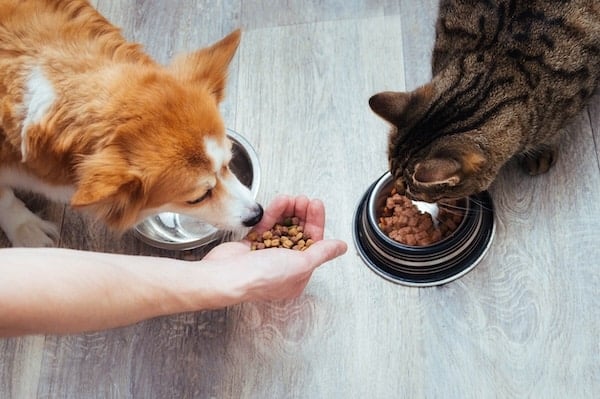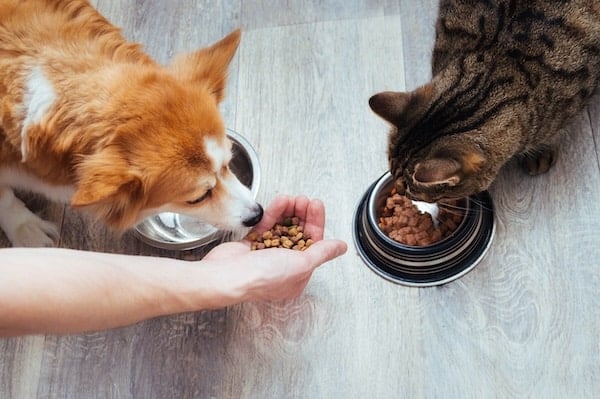
Check out our latest products
- This post contains affiliate links. Read more here.
- Not a substitute for professional veterinary help.
You’ve made your travel plans, and you’ve got a pet sitter lined up. Great! Now it’s time to set up everything in your home for your pet sitter before you go. But how do you know that you haven’t forgotten anything that your sitter or pet will need? A house-sitting checklist.
In this guide, we’ll cover basic house-sitting instructions, how to prepare accommodations for your sitter, what pet supplies to have on hand, and who else to notify that you’ll be gone. Here’s everything you’ll need to ensure your home and pets are prepped and ready.
Write Instructions for Your House Sitter
One of the best things you can do for both your peace of mind and that of your pet sitter is to write down instructions for them to reference during their stay. From household tasks to specific instructions for feeding your pets, this information should clearly outline your expectations for care so there’s no confusion. Here are some common things to add to your house-sitting checklist.
House tasks
- Plant care: List any indoor or outdoor plants that will need tending while you’re away. Give instructions on how often and how much to water them.
- Collecting mail: Give your pet sitter a heads-up if you’re expecting any packages. Let them know when they’ll arrive and where to put any mail.
- Garbage: Note the days for trash, recycling, and/or compost pickup, which bins to use, and where your sitter should place them for collection.
- Pet waste: Include how you’d like your sitter to dispose of pet waste and specify where it should go, like in a designated outdoor bin.
Safety instructions
- Locks: Explain which doors or windows your sitter should lock at night or when they leave, as well as where to leave keys.
- Alarm systems: Give your sitter the code and instructions on how to arm/disarm your alarm system.
- Cameras: Indicate the location of any security or pet cameras inside or outside the home for full transparency.
- Visitors: Let your sitter know if they should expect anyone to drop by, such as a weekly house cleaner or a landscaping crew.
Home rules
- Guest policy: Document whether you want your sitter to pre-approve guests or if you’d like them to stick to a no-visitor policy. Either is okay as long as you’re clear and upfront from the start.
- Off-limit pet areas: Outline areas that are okay or not okay for your pet to access, like whether they can be on furniture or sleep in the bed.
- Restricted areas: Clearly specify any rooms, closets, or areas in your house that are private, such as main bedrooms or home offices.
Pet care

anastas_ via iStock
Appliance instructions
- Heating/cooling: Explain how to work the thermostat and what temperature you’d prefer your sitter to keep the house at.
- Wi-Fi and TV: Share your Wi-Fi’s name and password, as well as login information and instructions for using the TV or other streaming devices.
- Home appliances: Note any quirks or special instructions for commonly used appliances, such as a refrigerator that makes a loud noise or a washing machine that they’ll need to run on a specific cycle.
Parking instructions
- Parking spots: Clearly indicate if there’s a specific spot on the street, driveway, or garage that your sitter should park their car.
- Parking rules: Note any parking rules that your sitter might encounter, such as street sweeping days, not blocking the driveway, or certain garage spots that are off-limits.
Emergency contacts
- Additional contact information: Along with your number, give your sitter your email or the contact information of the hotel or place where you’ll be staying.
- Emergency contacts: Leave your sitter with two or more emergency contacts they can call in case they can’t reach you.
- Vet care: It’s also a good idea to give your sitter the number and location of your vet’s office, as well as information for the nearest emergency animal hospital.
Prepare Accommodations
Before you leave, here are a few things to remember to do to set up your house for your sitter, ensuring they’re comfortable during their stay.
- Provide clean towels, sheets, and blankets
- Create storage space for their luggage and toiletries
- Clear a spot for groceries in the fridge, cabinets, and pantry (especially for extended stays)
- Make sure your house sitter has keys, a garage door opener, or codes to get into the house
- Put away sentimental or breakable items (this isn’t usually an issue, but just in case you’re worried)
- Leave written pet sitter instructions in an easy-to-find place, like on the kitchen table or fridge
- Have your pet’s toys, bedding, feeding and water bowls, and leashes/harnesses ready
- Tidy up your house (vacuum, wipe surfaces, clean dirty dishes, take out the trash, clean the litter box, etc.)
Get Supplies
Next on your house-sitting checklist, stock up on any household and pet supplies. Get more than you think you need, so your sitter doesn’t have to run out and replace anything.
- Pet essentials: Make sure your pet has more than enough food and supplies (medicine, puppy pads, litter, poop bags) for the entire stay.
- Household items: Stock up on essential household supplies, such as extra laundry detergent, hand soap, cleaning supplies, dishwashing soap, and trash bags.
- Welcome food basket: While you’re not obligated to provide food for your sitter, a welcome gift of starter supplies is always nice!
Notify Neighbors
If you’re friendly with your neighbors, let them know you’ll be having a pet sitter staying over, so they don’t get concerned seeing someone new around your home. It’s also a good idea to give anyone who regularly visits your home a heads-up, too, like a gardener or landlord. Consider also leaving a spare set of keys with a trusted local friend or neighbor, and let the sitter know who that person is.
While it takes time to plan ahead, having a detailed checklist for your house sitter helps ensure that everything goes smoothly, allowing you to enjoy your time away!







![[5G & 2.4G] 2K Indoor Security Camera for Home Security, AI Voice Change for 2-Way Talk, Motion Detection, Night Vision, 24/7 SD Recording/Cloud Storage, WiFi Home Camera, Pet Cam with Phone App](https://i3.wp.com/m.media-amazon.com/images/I/61I2U+sTT3L._AC_SL1500_.jpg?w=300&resize=300,300&ssl=1)






